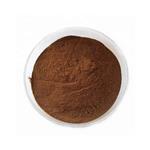- Acid Red 27
-

- $10.00/ kg
-
2025-02-13
- CAS:915-67-3
- Min. Order: 1kg
- Purity: 99.99%
- Supply Ability: 10 tons
- Amaranth
-

- $42.00 / 500mg
-
2024-11-19
- CAS:915-67-3
- Min. Order:
- Purity: 98.53%
- Supply Ability: 10g
- Acid Red 27
-

- $0.00 / 1kg
-
2024-04-02
- CAS:915-67-3
- Min. Order: 1kg
- Purity: 99%
- Supply Ability: 100ton
|
| | Acid Red 27 Basic information |
| | Acid Red 27 Chemical Properties |
| Melting point | >300°C | | density | 1.5 | | storage temp. | Sealed in dry,Room Temperature | | solubility | H2O: soluble10mg/mL | | form | Crystalline Powder | | Colour Index | 16185 | | color | Dark reddish-brown to dark brown | | PH | 9.65 (28°C, - OECD Test Guideline 122 - alkaline) | | Water Solubility | 50 g/L (20 ºC) | | λmax | 520 nm | | Merck | 14,375 | | BRN | 4122311 | | Stability: | Stable. Incompatible with strong oxidizing agents. | | Biological Applications | Detecting membrane-potential change; treating acquired resistance to GABAergic (ARG) agents | | InChIKey | WLDHEUZGFKACJH-ZRUFZDNISA-K | | LogP | -5.13 | | CAS DataBase Reference | 915-67-3 | | IARC | 3 (Vol. 8, Sup 7) 1987 | | EPA Substance Registry System | C.I. Acid Red 27, trisodium salt (915-67-3) |
| | Acid Red 27 Usage And Synthesis |
| Description | Amaranth (FD & C Red No. 2) consists essentially of a trisodium 2-hydroxy-l-(4-sulfonato-1-naphthy lazo)naphthalene 3,6-disulfonate and subsidiary coloring matters together with sodium chloride and/or sodium sulfate as the principal uncolored components. Amaranth may be converted to the corresponding aluminum lake. | | Chemical Properties | solid | | Uses | Dyeing wool and silk bright bluish-red from an acid bath. Food colorant. As indicator. In color photography. | | Definition | An azo dye derived from naphthionic and
R acids. | | World Health Organization (WHO) | Approval of amaranth as a permitted colouring agent in foods and
pharmaceutical products was withdrawn by the United States FDA in 1976, on the
basis of positive findings in carcinogenicity tests which were later disputed on
technical grounds and which have not been confirmed in subsequent tests. It has
since been withdrawn by some other national regulatory authorities because of
uncertainty regarding its safety, but elsewhere it remains widely used. | | General Description | Dark red to dark purple powder. Almost no odor. Tastes salty. pH (1% solution in water) approximately 10.8. Used to dye wool and silk bright bluish-red from an acid bath. | | Air & Water Reactions | Can be explosive as an airborne dust at certain concentrations. Moderately soluble in water. | | Reactivity Profile | Acid Red 27 may form toxic gases with acids, aldehydes, amides, carbamates, cyanides, inorganic fluorides, halogenated organics, isocyanates, ketones, metals, nitrides, peroxides, phenols, epoxides, acyl halides, and strong oxidizing or reducing agents. May form flammable gases with alkali metals. Explosive combination can occur with strong oxidizing agents, metal salts, peroxides, and sulfides. | | Hazard | A questionable carcinogen. May not be
used in foods, drugs, or cosmetics. | | Fire Hazard | Flash point data for Acid Red 27 are not available; however, Acid Red 27 is probably combustible. | | Properties and Applications |
|
Standard
|
Light Fastness
|
Soaping
|
Persperation Fastness
|
Oxygen bleaching
|
Fastness to seawater
|
|
Fading
|
Stain
|
Fading
|
Stain
|
Fading
|
Stain
|
|
ISO
|
3
|
3
|
5
|
3-4
|
1
|
4-5
|
3
|
2
|
|
AATCC
|
5
|
3
|
3
|
3-4
|
2
|
2
|
1
|
1
|
|
| | Acid Red 27 Preparation Products And Raw materials |
|